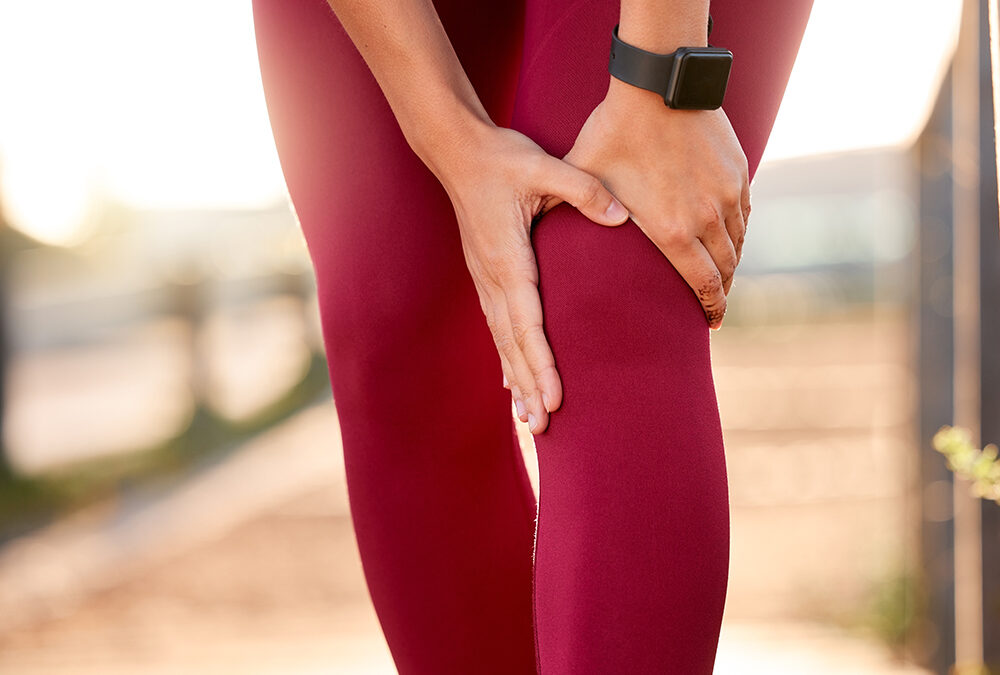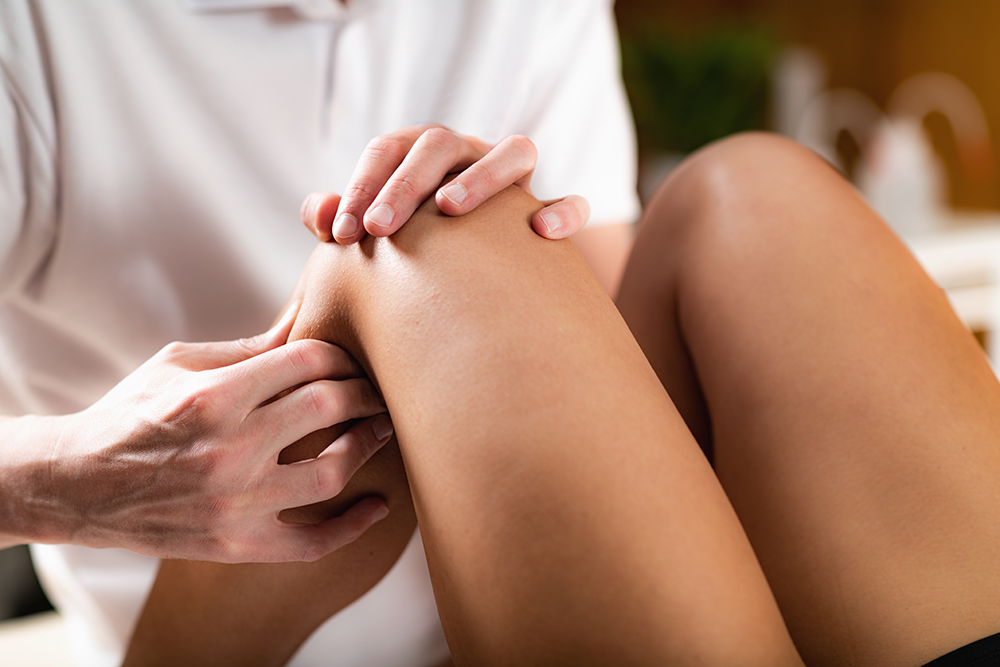Contents
Knee pain is a common complaint among both older and younger age groups, but the issue causing pain can be very different. Risk factors like excess body weight, lack of strength from a sedentary lifestyle, and certain activities like sports and occupations that put repetitive stress on the knee joint tend to be more relevant to knee pain and injuries.
There are a few different things that can cause pain behind the knee when bending it. Baker cysts and hamstring tendinitis are common in active people, and the risk of osteoarthritis increases with age.
This article will outline the most common causes of pain behind the knee when bending it and some physical therapy treatments physical therapists may use to help soothe it away.
What causes pain behind the knee when bending it?
While staying active generally strengthens your muscles and keeps joints flexible, playing certain sports can either irritate parts of your knee joint from repetitive movements or put you at risk for a knee injury from sudden movements. For example, sports like soccer and cycling involve repetitive movements, but basketball and skiing involve fast pivots that can cause injuries.
Baker cysts are one of the most common reasons active people notice pain behind the knee when bending it. A Baker cyst forms when excess synovial fluid from the knee joint builds up and forms a bump behind the knee. Hamstring tendinitis is also a common cause for pain behind the knee since the medial hamstrings attach to the lower leg on the inside of the tibia, below the knee.
The following conditions and injuries can cause pain behind the knee when bending it:
- Baker cyst — Also known as a popliteal cyst or synovial cyst, Baker cysts are benign growths on the posterior (back) side of the knee that usually form after a knee injury. These often go away on their own.
- Hamstring tendinitis — Three different tendons attach the hamstrings to the back of the knee. When the hamstring muscle is overused or strained, it can put sudden strain on the hamstring tendons, too. Overuse is the most common cause of hamstring tendinitis, but it can also result from poor form or quick changes in speed.
- Knee injury — Other knee injuries can lead to pain behind the knee. For instance, the patellar cruciate ligament (PCL) runs between the thighbone and shinbone, holding them together at the knee. PCL injuries aren’t very common and they usually only occur after trauma, like a dislocated patella or torn meniscus.
- Osteoarthritis — Over time, with repetitive use, any joint is subject to osteoarthritis. This is the wearing away of cartilage at the ends of your bones. If your job has required a lot of kneeling for several years or more, osteoarthritis could cause pain behind the knee.
How a physical therapist can help
Baker cysts and minor strains may go away on their own, but in other situations when you have intense pain or pain that doesn’t go away within a couple of weeks, you should see a physical therapist. After asking you a few questions and possibly asking to observe your knee as you walk or move your legs in a specific way, your PT can tell you if they suspect there might be a fracture or a torn ligament that would need medical attention. They may order an X-ray or ultrasound for a closer look. Your lifestyle, the type of pain you have, when it started, whether it comes and goes, and other factors can tell your physical therapist a lot about what’s potentially causing your knee pain.
It’s a good idea to see a physical therapist for pain behind the knee when bending it because they’ll be able to create a treatment plan that’s specific to your body and your pain. If your knee is stiff, they might use joint mobilization techniques to help get it moving. With direct observation, a PT can tell you about specific exercises that will strengthen your legs in all the right places and make recommendations on how to limit further injuries.
Physical therapy treatments for pain behind the knee when bending it
When you see a PT for pain behind the knee when bending it, they’re likely to use a few different techniques to strengthen the leg muscles around your knee and mobilize the joint. They’ll give you instructions on how to continue exercising your knee while you give it some rest. If you’re an athlete, they’ll let you know when it’s safe to play and practice at full exertion again.
In addition to leg strengthening exercises, your PT might also recommend the RICE method to help with pain and swelling. This stands for resting the affected leg, using ice, compressing muscles and elevating the affected knee.
A PT may mix and match any of these modalities to treat pain behind the knee when bending it:
- Manual therapy — Manual therapy is a catchall term for tissue and joint mobilization techniques where the PT uses their hands to move your body. Your PT might feel the back of your knee or ask you to lie down while they lift your foot to flex your knee.
- Exercises — Your therapist will show you some leg strengthening exercises that will take pressure off your knee. For example, the straight leg raise, in which you sit with your legs extended and lift your leg straight upward at the hip joint.
- Ultrasound — An ultrasound is a type of treatment that allows heat waves from the ultrasound wand to be directly absorbed into the skin. This type of physical therapy modality is typically used for muscle strains, ligament sprains and tendinitis.
Lattimore PT can help you safely get relief from knee pain
If you’re experiencing a lot of pain behind the knee when bending it or if the pain doesn’t go away on its own, don’t wait to see a physical therapist. We can help you determine if you have an injury or another type of condition, and we can create a treatment plan to address the pain.
Contact our team today for more information or to schedule an initial appointment.


